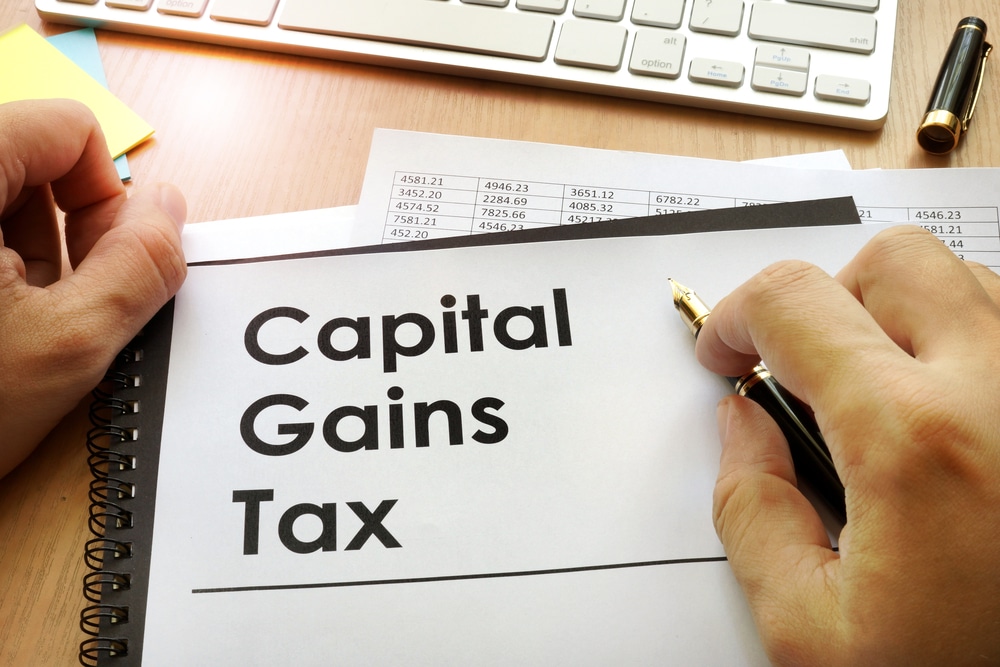Essential Insights on 1031 Exchanges in California
The Growing Trend: 1031 Exchanges as a Popular Exit Strategy for California Landlords
If you're a landlord in California contemplating the sale of your rental property, rest assured that you're not alone in considering this decision. Numerous factors have contributed to an increasing number of landlords opting to sell their properties in 2023. California currently leads the nation in outward migration, and the state's landlord-tenant laws are increasingly perceived as unfavorable towards property owners.
One significant incentive driving this trend is California's high capital gains tax, which currently holds the distinction of being the highest in the nation. However, this tax burden is no longer deterring landlords from selling their investment properties, thanks to the rising popularity of tax-deferred exit strategies such as the 1031 Exchange. With a 1031 Exchange, landlords can sell their investment properties without incurring immediate tax liabilities, thereby positioning themselves better to attempt to achieve their financial and lifestyle objectives through reinvestment.
These influential factors, coupled with potential unfavorable economic conditions and anticipated changes in tax laws, are prompting California landlords to seriously consider selling their investment properties sooner rather than later. Let's delve into the primary drivers fueling this emerging trend:
California's Outward Migration: Understanding the Economic Challenges
California, once regarded as a prime destination for investment property, is experiencing a significant shift in population dynamics. Historically, the state has been at the forefront of population growth in the United States since its establishment in 1850. However, recent data indicates a notable change.
According to the San Francisco Business Journal, California currently leads the nation in domestic out-migration, with over 367,299 residents having left the state as of July 1, 2021, based on Census data. The driving force behind this substantial shift is the issue of affordability.
The average price of a single-family home has surged by 23.9% compared to the previous year. With the increase in remote work opportunities, individuals no longer feel compelled to live within commuting distance of their employers, prompting them to trade high California rents for more affordable properties in other states.
While 2021 marks the first year of reported population decline, California has experienced a consistent loss of residents to other states over the past decade. According to the Public Policy Institute of California, between 2010 and 2020, the state saw a net loss of 6.1 million residents to other states, with only 4.9 million individuals relocating to California.
The primary drivers of this outward migration are the high cost of living, including the nation's highest state income tax, highlighting the real economic challenges faced by many in the post-pandemic world.
Challenging Landscape: California's Unfavorable Landlord Laws
Landlord-tenant laws vary from state to state, with some statutes favoring tenants more than others. In the case of California, many consider its landlord/tenant laws to be the least favorable to property owners in the entire country.
While it is uncommon for cities to impose additional regulations on top of state laws, two major cities, San Francisco and Los Angeles, have implemented aggressive restrictions on landlords, further exacerbating the situation. As a result, these cities are often regarded as two of the most anti-landlord cities in the United States.
The implementation of the California Tenant Protection Act in 2019 brought about rent control and eviction laws that affect a majority of residential properties, including those in Los Angeles and San Francisco. In fact, over 85% of rental units in Los Angeles are subject to rent control, and in San Francisco, the last allowable rent increase was a mere 0.7%. Additionally, California landlords must demonstrate "just cause" in order to terminate a tenancy, further limiting their flexibility.
For anyone who owns residential rental investments, it is crucial to be well-versed in the specific landlord laws of the state and any city-specific regulations that may hinder their financial growth. Understanding these legal complexities is paramount in navigating the challenging landscape faced by landlords in California.
The Burden of Taxes: California's Highest Capital Gains Tax
When considering the sale of an investment property, one crucial factor that can deter property owners is the potential tax liability they would face. It's important to recognize that the total tax liability associated with the sale of an investment property encompasses more than just the federal capital gains tax. It also includes state capital gains tax, depreciation recapture tax, and net investment income tax.
For property owners in California, these taxes can be particularly substantial. The potential tax liability in California is the highest among all states in the U.S., with up to 42.1% of net proceeds potentially being paid as federal and state taxes. This high tax burden reflects the combination of federal capital gains tax rates and California's state capital gains tax rates, which significantly impact the overall tax liability for property owners in the state.
Understanding the significant tax implications is crucial for California property owners considering the sale of their investment properties. It is advisable to consult with tax professionals and financial professionals to assess the specific tax implications of a potential sale and explore strategies to mitigate the tax burden while maximizing returns.
The Popularity of 1031 Exchanges among California Landlords

1031 Exchanges have gained significant popularity among California landlords due to the various benefits they offer, particularly in relation to the high tax liabilities faced by property owners in the state. The primary advantage of utilizing a 1031 Exchange when selling a rental property is the deferral of the substantial tax liability that California landlords would typically face. By deferring taxes on the relinquished property, landlords can reinvest a larger portion of the net proceeds into a replacement property.
Furthermore, a 1031 Exchange allows property owners to strategically choose a replacement property that aligns with their financial and lifestyle objectives. This provides an opportunity to select a more desirable location or property type that better suits their investment goals. For instance, landlords can transition from actively managed properties to investment real estate that potentially generates passive income, such as management-free 1031 Delaware Statutory Trust (DST) properties.
This flexibility enables landlords to exchange a multi-family rental property for fractional ownership in a larger, professionally managed institutional-quality property, such as Class-A multifamily, industrial, or medical office properties. By diversifying their investments through multiple replacement properties, landlords can also better mitigate risk associated with owning a single property.
In summary, the popularity of 1031 Exchanges among California landlords stems from the ability to defer taxes, reinvest a larger amount into replacement properties, strategically select properties that align with investment goals, and potentially transition to potentially passive income-generating investments. These advantages make 1031 Exchanges an appealing option for landlords seeking to optimize their real estate portfolios and address their financial objectives.
Understanding the Mechanism of a 1031 Exchange
A 1031 Exchange, named after Section 1031 of the U.S. Internal Revenue Code, provides a means for selling investment real estate without incurring immediate capital gains tax. This tax deferral strategy allows investors to reinvest the sales proceeds into like-kind investment property of equal or greater value while adhering to the rules and timing requirements outlined in IRC 1031. The term "like-kind" refers to any real estate held for business or investment purposes, enabling exchanges between different types of investment properties.
While a 1031 Exchange offers a valuable opportunity to defer capital gains, depreciation recapture, and net investment income taxes, it is essential to recognize that these transactions can be complex. The flexibility lies in the range of strategies that can be employed, but strict adherence to the rules set by the IRS is crucial.
Failing to comply with IRS regulations can result in a failed Exchange, leading to the full tax liability becoming due, or a Partial Exchange, where a portion of the tax liability remains (typically the most significant portion).
Investors considering a 1031 Exchange should familiarize themselves with the workings of these transactions, including the specific rules and timing requirements established by the IRS. To gain a deeper understanding of 1031 Exchanges, we offer a complimentary guide, "Understanding 1031 Exchanges," which provides valuable insights and information. You can download this guide for free to enhance your knowledge about 1031 Exchanges and make informed decisions when selling investment property.
Determining Suitability: Is a 1031 Exchange the Right Option for You?
If you are contemplating the sale of your California rental property, a 1031 Exchange can present itself as a highly advantageous option, offering numerous potential benefits that contribute to the possibility of wealth growth.
First and foremost, understanding the tax liability associated with your relinquished property is crucial. This assessment will allow you to compare the net proceeds available for reinvestment with and without a 1031 Exchange. By deferring taxes through a 1031 Exchange, you can potentially retain a larger portion of your investment capital to reinvest.
Equally important is gaining a comprehensive understanding of the rules and timeline governing a 1031 Exchange. The IRS imposes strict regulations, and adherence to these guidelines is vital to qualify for tax deferral. Familiarizing yourself with these rules will ensure a smooth and successful exchange process.
To attempt to maximize the benefits of a 1031 Exchange, it is essential to establish clear financial and lifestyle objectives. The replacement properties you select should align with your specific goals, taking into consideration factors such as risk tolerance, desired cash flow, appreciation targets, liquidity needs, management control preferences, and estate planning considerations.
Seeking guidance from a licensed 1031 Exchange professional before selling your investment property is highly recommended. They can assist you in navigating the complexities of 1031 Exchange rules, accurately assessing your tax liability, and identifying suitable replacement properties that align with your financial and lifestyle objectives.
By consulting an expert in 1031 Exchanges, you can better ensure compliance with regulations, gain a comprehensive understanding of your options, and make informed decisions that seek to optimize the benefits of your investment strategy.
General Disclosure
Not an offer to buy, nor a solicitation to sell securities. All investing involves risk of loss of some or all principal invested. Past performance is not indicative of future results. Speak to your finance and/or tax professional prior to investing. Any information provided is for informational purposes only.
Securities offered through Emerson Equity LLC Member: FINRA/SIPC. Only available in states where Emerson Equity LLC is registered. Emerson Equity LLC is not affiliated with any other entities identified in this communication.
1031 Risk Disclosure:
- There’s no guarantee any strategy will be successful or achieve investment objectives;
- All real estate investments have the potential to lose value during the life of the investments;
- The income stream and depreciation schedule for any investment property may affect the property owner’s income bracket and/or tax status. An unfavorable tax ruling may cancel deferral of capital gains and result in immediate tax liabilities;
- All financed real estate investments have potential for foreclosure;
- These 1031 exchanges are offered through private placement offerings and are illiquid securities. There is no secondary market for these investments.
- If a property unexpectedly loses tenants or sustains substantial damage, there is potential for suspension of cash flow distributions;
- Costs associated with the transaction may impact investors’ returns and may outweigh the tax benefits






